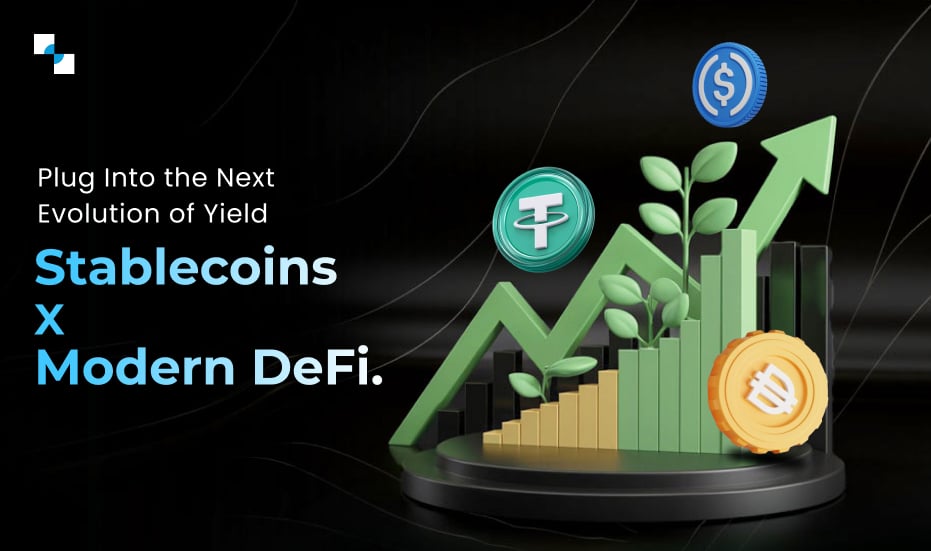Staking, a cornerstone of the blockchain ecosystem, has emerged as a compelling avenue for entrepreneurs to generate passive income and contribute to the growth of decentralized networks. By understanding the intricacies of staking and implementing effective strategies, entrepreneurs can optimize their returns while supporting the broader crypto ecosystem. In this blog, we will discuss the best staking strategies for entrepreneurs. Let’s dive in!
Understanding Staking
At its core, staking involves locking up a certain amount of cryptocurrency in a wallet to support the operations of a blockchain network. In return, stakers are rewarded with a portion of the network’s transaction fees or newly minted coins. This process, often referred to as “proof-of-stake,” contributes to the security and decentralization of the network. Everyone wants highest staking rewards crypto, there are some strategies to maximize rewards that we will be discussing in this blog. But first let’s see what the benefits of staking for entrepreneurs are:
Benefits of Staking for Entrepreneurs
There are several benefits of staking for entrepreneurs:
1. Passive Income Generation
Staking provides a reliable and consistent income stream by rewarding participants with additional tokens or coins for locking up their assets. For entrepreneurs, this represents an excellent opportunity to diversify revenue sources beyond traditional business operations. Unlike actively trading cryptocurrencies, which can be time-consuming and risky, staking allows entrepreneurs to earn passive income while maintaining their focus on running their businesses. This steady income can help with cash flow management, enabling entrepreneurs to reinvest in their ventures or cover operational costs.
2. Portfolio Diversification
Market volatility is an inherent risk in the cryptocurrency space. By staking different cryptocurrencies across various platforms, entrepreneurs can effectively mitigate this risk. Diversification allows them to spread their investments, reducing the impact of price fluctuations on their overall portfolio. If one asset experiences a downturn, other staked assets may perform better, balancing potential losses. This strategy not only stabilizes returns but also opens the door to different staking rewards, increasing overall earnings. You can get in touch with staking service providers for more information.
3. Support for Blockchain Ecosystem
When entrepreneurs stake their assets, they contribute directly to the security and stability of blockchain networks. This support helps foster a thriving ecosystem for entrepreneurship and innovation, as well-functioning networks attract developers and users alike. By participating in staking, entrepreneurs play a vital role in the growth and success of blockchain projects, ultimately benefiting from the advancements and improvements within the ecosystem. This involvement can lead to new business opportunities and partnerships as the blockchain space evolves.
4. Potential for Governance
Many staking platforms grant stakers voting rights, enabling them to participate in network decision-making processes. This governance aspect empowers entrepreneurs to influence the direction of the projects they are invested in. By voting on key issues such as protocol upgrades or fund allocations, entrepreneurs can help shape the future of the blockchain networks they support. This not only gives them a say in the ecosystem but can also align their interests with the long-term success of the projects they are involved with.
Key Staking Strategies for Entrepreneurs
Let’s see what the best staking strategies for entrepreneurs are:
1. Diversification
To maximize returns and reduce risk, entrepreneurs should spread their investments across multiple staking platforms and cryptocurrencies. Diversification allows them to capitalize on different projects’ strengths and mitigate the impact of underperformance in any single asset. By analyzing and choosing various high-potential cryptocurrencies, entrepreneurs can create a balanced staking portfolio that enhances overall returns while minimizing exposure to volatility.
2. Risk Assessment
Before committing to staking, it’s crucial to conduct a thorough evaluation of potential projects. Entrepreneurs should consider factors such as team experience, project roadmap, tokenomics, and community support. A well-experienced team with a clear vision and strong community backing indicates a project’s potential for long-term success. By assessing these elements, entrepreneurs can make informed decisions that align with their risk tolerance and investment goals. You can also get in touch with a DeFi Staking Platform Development company to build your own platform.
3. Lock-up Period Analysis
Many staking options come with specific lock-up periods during which the staked assets cannot be withdrawn. Understanding these periods is essential for entrepreneurs to manage liquidity. While longer lock-up periods may offer higher staking rewards, they limit immediate access to funds. Entrepreneurs should analyze their cash flow needs and liquidity preferences when choosing staking options to ensure they strike the right balance between rewards and accessibility.
4. Staking Pool Participation
For entrepreneurs looking to lower their investment thresholds, joining staking pools can be an excellent strategy. Staking pools allow multiple investors to combine their resources, increasing the chances of earning rewards while reducing individual risk. By pooling funds, entrepreneurs can participate in staking opportunities that may have high minimum requirements. This approach not only diversifies their investments but also makes staking accessible to those with limited capital.
5. Reinvestment
Reinvesting staking rewards can significantly accelerate earnings over time due to the power of compounding. Instead of cashing out rewards, entrepreneurs should consider reinvesting them into their staking portfolios. This strategy amplifies their returns, as rewards generate additional rewards. By adopting a long-term perspective and consistently reinvesting, entrepreneurs can harness the exponential growth potential of their staked assets.
6. Stay Updated
The cryptocurrency market is fast-paced and ever-changing. Entrepreneurs should actively stay informed about the latest trends, updates, and opportunities in the staking landscape. Following reputable news sources, joining community discussions, and participating in online forums can provide valuable insights. The knowledge enables entrepreneurs to make timely decisions regarding their staking strategies, adjusting their portfolios to align with market dynamics and new developments.
7. Security
Prioritizing the security of staking assets is essential for entrepreneurs. Given the risk of hacks and theft in the cryptocurrency space, using secure wallets, such as hardware wallets, is crucial. Additionally, entrepreneurs should choose reputable staking platforms with strong security measures and transparent practices. By implementing robust security protocols, entrepreneurs can protect their investments and minimize the risk of loss. You can get in touch with staking service providers for more information.
Advanced Staking Strategies
1. Liquidity Staking
Liquidity staking is an innovative strategy that involves providing liquidity to decentralized exchanges (DEXs) in exchange for staking rewards. By depositing assets into liquidity pools, participants help facilitate trading on the DEX, which enhances market efficiency.
- Higher Potential Returns: In addition to earning staking rewards, liquidity providers typically receive a share of the transaction fees generated by trades within the pool. This can lead to higher overall returns compared to traditional staking methods.
- Risks Involved: However, liquidity staking carries additional risks, such as impermanent loss, which occurs when the price of the staked assets fluctuates relative to each other. Additionally, smart contract vulnerabilities could lead to loss of funds. It’s crucial for entrepreneurs to assess these risks against potential rewards when considering liquidity staking.
2. Delegated Staking
Delegated staking allows participants to delegate their staking power to a trusted validator or node operator. It simplifies the staking process for those who may not want to run their own nodes or are unfamiliar with the technical requirements. It helps in highest staking rewards crypto so that participants can earn more.
- Simplification: By choosing a reputable validator, entrepreneurs can participate in staking without managing their own infrastructure. This is particularly advantageous for those new to staking or those with limited technical expertise.
- Increased Rewards: Depending on the validator’s performance, delegated staking can potentially yield higher rewards, as experienced validators often have better uptime and efficiency in validating transactions. Additionally, many validators share a portion of their rewards with those who delegate to them.
3. Masternode Operation
Masternodes are special nodes that perform additional functions on certain blockchain networks, such as facilitating instant transactions or enhancing privacy features. Running a masternode usually requires a significant investment in the cryptocurrency associated with that network.
- Substantial Rewards: In return for the investment and operational responsibilities, masternode operators can receive substantial rewards, often significantly higher than standard staking yields. This makes masternodes an attractive option for seasoned investors with the capital to invest.
- Operational Complexity: However, operating a masternode requires technical knowledge and ongoing maintenance. Entrepreneurs must ensure that their masternodes are always online and functioning correctly to maximize rewards, which adds complexity compared to simpler staking methods.

Maximizing Returns: A Deeper Dive
1. Dollar-Cost Averaging (DCA)
Dollar-cost averaging (DCA) is a risk management strategy that involves investing a fixed amount of cryptocurrency in staking at regular intervals, regardless of the market price.
- Mitigating Volatility: This strategy helps to mitigate the impact of market volatility, as it spreads the investment over time. By purchasing during both highs and lows, entrepreneurs can potentially lower their average cost per unit of the staked asset.
- Long-term Strategy: DCA is particularly effective for entrepreneurs with a long-term investment horizon, as it encourages consistent investment habits and reduces the emotional stress of trying to time the market.
2. Compounding Interest
Compounding interest is the process of reinvesting staking rewards to earn additional returns over time. This strategy can significantly amplify overall earnings and is one of the best staking strategies.
- Automatic Compounding: Many staking platforms offer automatic compounding features, allowing users to reinvest their rewards seamlessly. By continuously reinvesting, entrepreneurs can take advantage of exponential growth, as rewards generate more rewards.
- Long-Term Growth: The earlier one starts compounding, the more significant the impact on total returns. This makes compounding a powerful strategy for entrepreneurs looking to maximize the potential of their staked assets over time.
3. Staking Rewards Optimization
Different staking platforms often have tiered reward structures based on the amount staked. Entrepreneurs can optimize their staking returns by strategically increasing their stake.
- Higher Reward Tiers: By understanding the specific reward structures of various platforms, entrepreneurs can identify opportunities to increase their stake and qualify for higher reward tiers. This can lead to increased yields without significantly increasing risk.
- Balance Between Risk and Reward: It’s essential for entrepreneurs to weigh the benefits of increasing their stake against their overall risk tolerance and investment strategy.
4. Research and Analysis
Staying informed about the performance of best staking crypto platforms and cryptocurrencies is crucial for optimizing staking returns.
- Identify Strong Projects: Entrepreneurs should regularly analyze projects for strong fundamentals, such as solid technology, a reliable team, and an active community. This can help identify which projects are likely to offer sustainable staking rewards.
- Monitoring Market Trends: Understanding market trends and the competitive landscape can also provide insights into which cryptocurrencies may outperform others, guiding informed staking decisions.
5. Tax Implications
Understanding the tax implications of staking rewards is essential for maximizing after-tax returns.
- Tax Obligations: In many jurisdictions, staking rewards may be considered taxable income, and capital gains tax may apply when selling staked assets. Entrepreneurs should consult tax professionals to navigate their specific obligations.
- Strategic Planning: Proper tax planning can help entrepreneurs optimize their staking strategies by identifying tax-efficient approaches, such as holding assets long-term to minimize capital gains taxes or leveraging tax-loss harvesting strategies.
The Future of Staking
The staking landscape is continually evolving. As blockchain technology matures and adoption grows, we can expect to see new and innovative staking opportunities emerge. Entrepreneurs who stay ahead of the curve and adapt to changing market conditions will be well-positioned to capitalize on the potential of staking.
By combining a deep understanding of staking mechanics with a strategic approach, entrepreneurs can unlock the full potential of this powerful investment tool. Want to venture into staking, get in touch with Antier, the top DeFi Staking Platform Development Company today!







